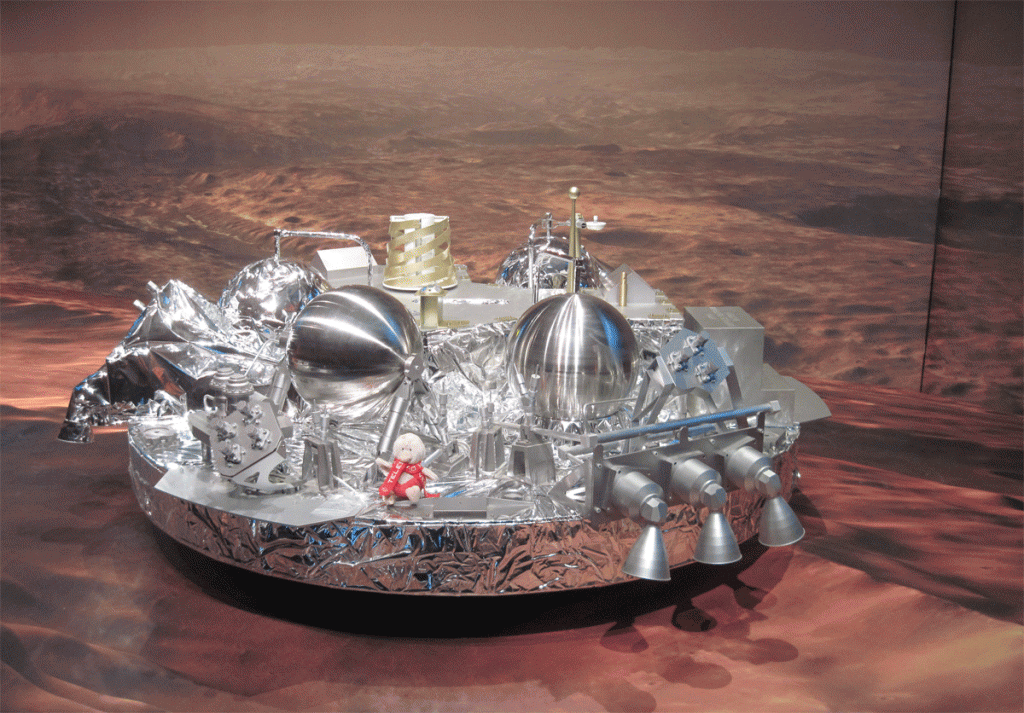Further he explained to me, that they will land the rover in a place with traces of water. And they want to conduct the drilling in preferably old sediments. The age of the landing site must be estimated by the number of meteorite craters.
Further information you will get here:
Vago, J; et al: “ESA ExoMars program: The next step in exploring Mars”; Solar System Research 49(7):518-528 · December 2015; DOI: 10.1134/S0038094615070199
In the last session Simone Silvestro and Carlo Bettanini gave an overwiew about science on the Schiaparelli lander.
Here is a close up view of a Schiaparelli-model.
To be honest: It looks as if some children took lots of spacey alu-stuff and constructed a flying saucer.
But Simone Silvestro and Carlo Bettanini assured us, that this is highly functional space ship and will do a perfect job on the red planet. O. k., convinced.
The next official part is:
21:13: “earliest announcement of spacecraft separation” – done.
uuups? Not so spectacular.
Some summaries for the end…many people could not decide to leave.
22:55: A long, long day ends. Definitely.
Everybody is happy. ExoMars 2016 is on its way.
Now we are looking forward for the 19.10.2016 – then the spacecraft will arrive at Mars. After 500 Millions of Kilometers.
For Astrobiology-Fans ExoMars 2018 will become far more exciting.
At the very moment it is not sure, if Roskosmos will postpone the start, as Igor Komarov, der Roskosmos-Head, said to journalists in Baikonur at 13.03.2016: “The issue of the mission’s possible postponement to 2020 is being discussed but the final decision has not yet been taken”
We will see.
However, we will go to Mars and look for methane, life and fossil traces of life.
In 2018 or 2020.
For further reading:
ESA: ExoMars


Letzte Kommentare